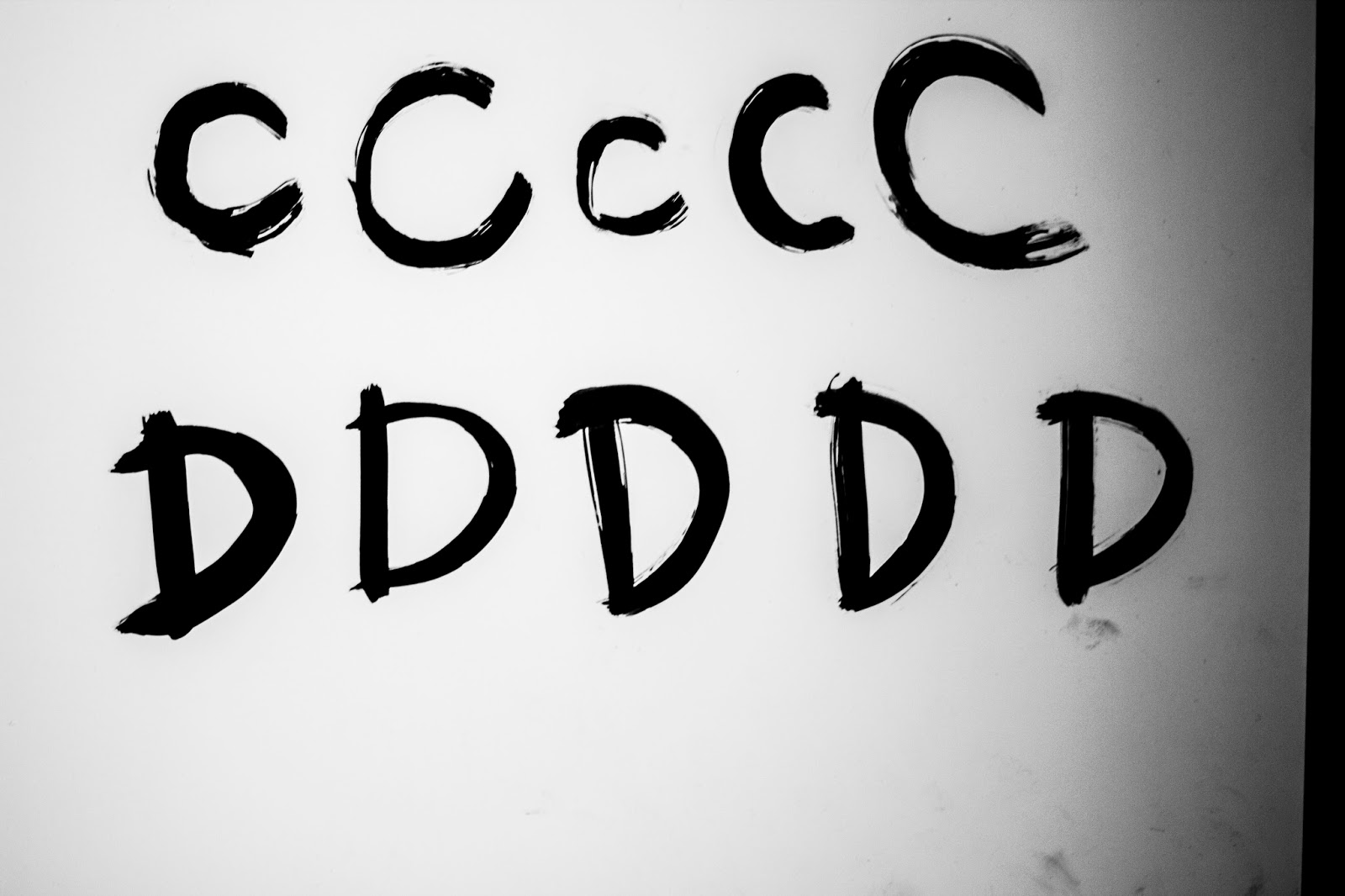After a long discussion of her needs and wants and also figuring out that the client was going to be in a sense "fussy" over what she wanted made me see this as a good challenge for my creative practice to produce a body of work which excelled myself as well as representing the client perfectly.
Nicole studied graphic design at A-levels and in turn made her own logo:
Having this as her logo for so long made her very attached to it and when I asked her consideration for a developed logo and identity before she goes into the professional working world it took some persuading but after a couple of weeks she decided to take me up on the offer.
I worked at modifying a free typeface I found called CoCo, this typeface is very elegant and fashion orientated where it consists of curves and heavy stems.
Condensing the typeface to make it appear taller helped exaggerate the stems. I also created a capital N from it and sent it over but she said it wasn't her. Upon reflection I agreed and went back to the drawing board.
After researching into fashion and typography's connection, I discovered that Bodoni orientated typefaces are a direct link to each other in our perception. After looking at the licenses and their fees I decided to design my own.
As they all look so similar I wanted some kind of character thrown in without sparing any elegance in the letter-forms.
To do this, I followed a circular curve rule with huge contrasts between the thickest and thinnest parts of the letters. This with the removal of the N's stem created a beautiful typeface which I felt far more confident with presenting to the client.
Nicole fell in love with it instantly, which of course made me really happy as I had spent a few hours making sure each letterform was perfect.
Now I had a logo to work with, I needed to develop branding typefaces for my client to use with her work.
Bodoni would continue to be the grouping throughout so I decided on Bodoni FLF Regular & Medium Italic.
Having a typeface in place allowed me to create an alternative logo for when a landscape format or smallest size was not small enough. This was purely the N and J pushed together with the name below it.
To keep a balance and consistency in type and branding I will need to develop a series of branding guidelines to follow throughout all mediums:
The logo must have a minimum of a 10mm border at all times, no content can fall within this border.
The logo must be in black or white, whichever is more legible upon the background, the colour must not change. Tints are permitted with the logo however nothing below 60%.
The logo must never be changed or modified in any way.
When used in print the logo can not go any lower than a minimum of 34mm in width. This rule is in respect to the detail of the lettering and will not be effective at any lower size. There is no maximum size.
If the issue arises where the logo is too big to fit in the needed space, use the smaller alternative logo which can be used at a minimum of 16mm in width.
Titles must be in uppercase Bodoni FLF Regular, unless on the same line as body copy, in which case titles must be in Small Caps Bodoni FLF Regular. Point size must remain one point size above all subtitles and two point sizes above the body copy.
Subtitles must be in titlecase Bodoni FLF Medium Italic one point size below the title and one point size above the body copy.
Body copy must be in lowercase one point size below the subtitle / two point sizes below the title.
Typography can not go below 7pt, this will keep all related content legible.
Instead of the word 'and' an ampersand '&' must always be used.
No other colour can be used apart from black or white, this is determined by legibility and readability upon the background, if either are appropriate then the user may choose.
All typographic layout must remain aligned centre or if not appropriate, aligned left in the centre of the medium.
Now I have created some guidelines for legibility and consistency, I can follow these rules when designing the business cards and if needed, other collateral too.
Following the branding guidelines that were now in place, everything had to be aligned centrally as well as consistent with the typographic rules that were set.
The client's response was very positive and allowed us to discuss the production methods. Wanting a very high end quality of production for her cards, I discussed letterpress printing with her. After showing her a few examples she was very impressed and said it would be perfect for her.
I came up with the idea to have one side black and the other white, the black side to have the logo in glossy black foil and then on the white side have contact details in black ink. The stock would be duplex 700gsm colorplan. To help her understand what it would look like, I mocked it up with photoshop using embossing and gradient options to show shine.
Nicole loved what she saw and asked for a quotation on how much it would cost. I got in touch with a few printers but only two replied. The cheapest came to £305.40 for 100 or £367.80 for 250.
I placed an order for 250 business cards once Nicole had sent me the money for the work I completed for her and the cost of the print.
These arrived after the module deadline so I don't expect to be graded on them but just in case my work hadn't been seen yet I decided to upload pictures of them.



































































